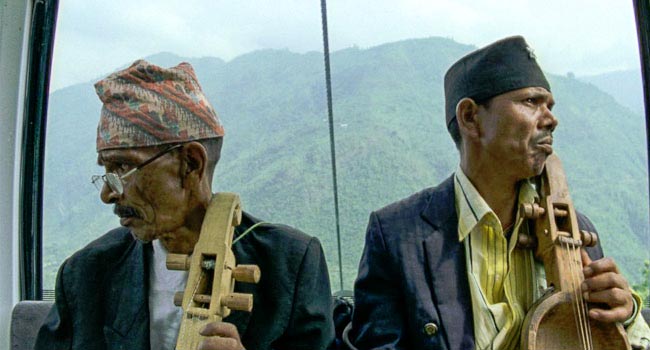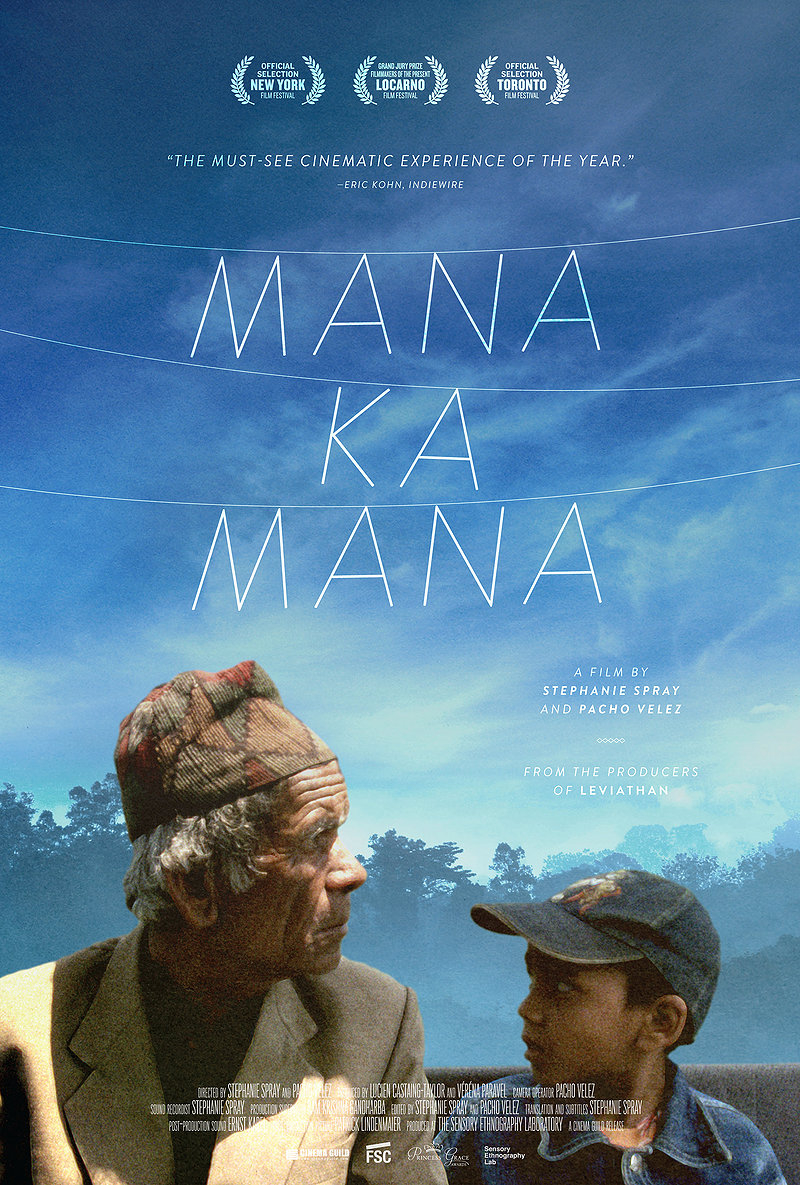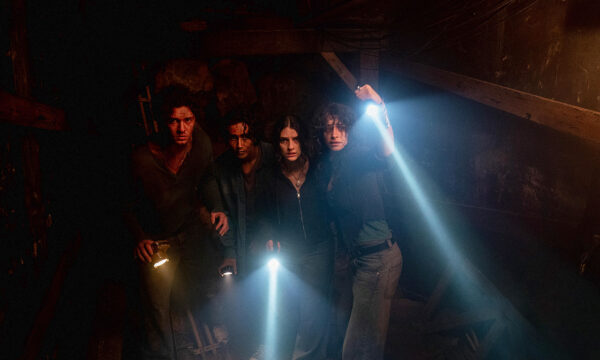Manakamana

The journey to Manakamana temple no longer requires an arduous walk through sparsely populated valleys and dense fauna.  A cable car station in Cheres means pilgrims reach their destination with offerings to the goddess in only ten minutes. The cars move seamlessly (aside from the occasional grinding of the gyring pulley, as the car is redirected in ascent or descent), hovering over the expansive vistas, above the Sal forest.
A cable car station in Cheres means pilgrims reach their destination with offerings to the goddess in only ten minutes. The cars move seamlessly (aside from the occasional grinding of the gyring pulley, as the car is redirected in ascent or descent), hovering over the expansive vistas, above the Sal forest.
For two hours the viewer follows the cable car. Inventively, the film makers use the station’s uncanny darkness as a transitional device between segments; a pitch-black screen is accompanied by the drone and strain of a settling car; interspersed light percussion jangles and the hubbub of the pilgrimage queue visually manifests as silhouettes of scurrying denizens. Given the film’s metaphysical tone, darkness can be interpreted as a void: it is both the beginning and the end of one particular journey, yet cyclically infinite and generative – not alien to Hinduism and its philosophy of time.
Thankfully, Stephanie Spray and Pacho Velez don’t impose on proceedings. Authentic conversations emerge, the pilgrims, by simply being there in the cable car (ethereal, overlooking the topography), are fuelled by a journey pregnant with existential immediacy and ancient reverence. The amazing vistas are the star power, here. Where nature and the transcendent converge, the audience’s imagination is incited to work. Even though the occasional dip in interest befalls one or two segments, the whole affair is strangely hypnotic.
The strongest segment involves a salient juxtaposition. Three elderly women become, in the dark, three male youths. While the women serenely mediate on memory, change, and the nature of their roles in society, the boys can’t look out to the mountains without their digital cameras or posturing rock star aspirations. The chasm between traditional Nepalese life and cultural modernity is as gaping as the valleys depicted.
The unfolding of the pilgrims’ reactions is the catalyst of the film’s charm, whereas the audience’s curiosity is the engine room: why are they going? What wishes do they desire of the goddess? The film ends strongly – a hair-raising medley between two musicians playing sarangis (a popular Nepalese instrument) is, like much of the film, poignant and breath-taking. Manakamana achieves everything it sets out to, most notably opening the audience’s mind to wonderment.
Mark Warburton
Manakamana is released in selected cinemas on 12th December 2014.
Watch the trailer for Manakamana here:
























Facebook
Twitter
Instagram
YouTube
RSS